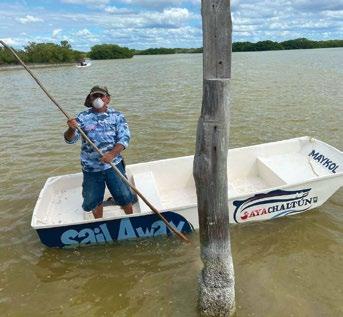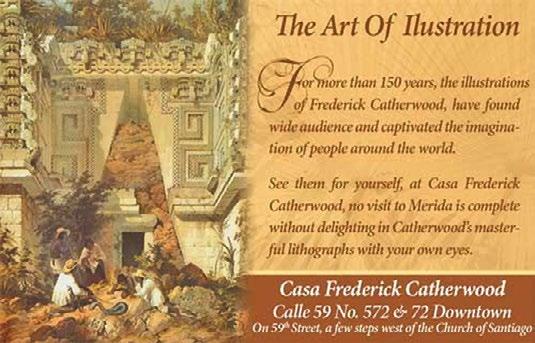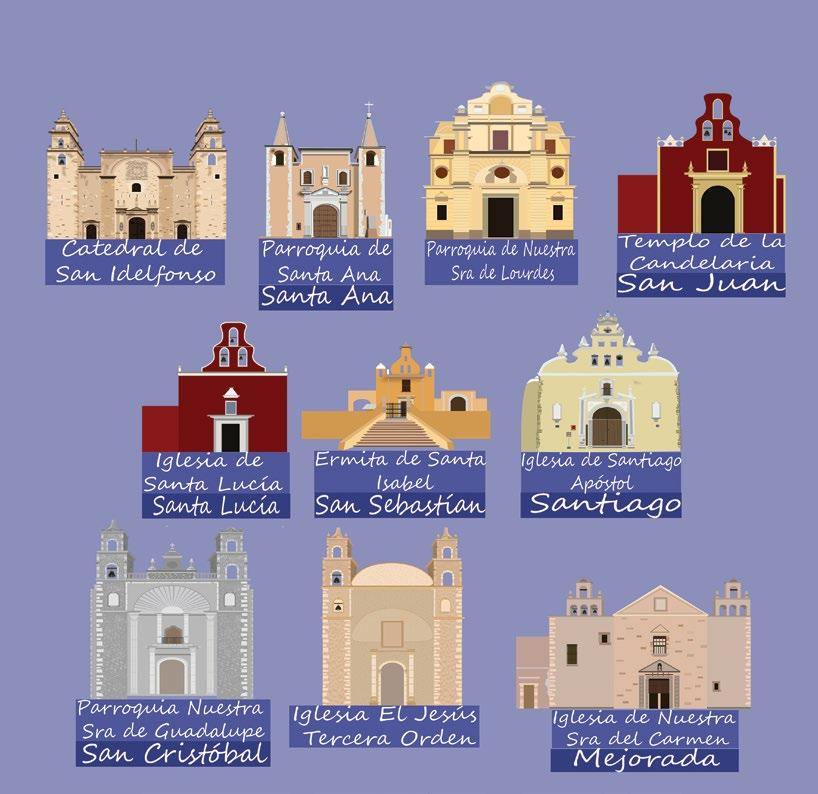
13 minute read
Explorando | Exploring
TEXTO Y FOTOS GERMÁN ÁVILA
¿Qué es una lluvia de estrellas?, ¿Realmente son estrellas cayendo del cielo? Para responder a estas preguntas hay que entender que es físicamente imposible que las estrellas caigan del cielo como lluvia, ya que éstas son miles de veces más masivas que nuestro planeta. A lo que se le conoce como “lluvia de estrellas”, en realidad es una lluvia de meteoros, o sea, son fragmentos de roca y hielo que se desprendieron de cuerpos celestes más grandes en el pasado, los cuales se quedaron flotando en la órbita de la Tierra alrededor del Sol.
Advertisement

Cuando nuestro planeta está en su órbita alrededor del Sol, atraviesa una nube de estos fragmentos que producen estos sucesos celestes. A pesar de que los fragmentos que entran en la atmósfera son pequeños, lo hacen a una velocidad de varios kilómetros por segundo, ocasionando que se incendien por la fricción y el aire, por lo tanto, emiten luz. Por otro lado, debido a que la Tierra pasa cada año en el mismo punto en el proceso de traslación, estos fenómenos astronómicos suceden en fechas muy similares cada año.
En abril tenemos la mayor actividad de la lluvia de meteoros de las virgínidas, la cual recibe su nombre a causa de la concentración de estrellas fugaces que están en la constelación de Virgo. Esta no será especialmente una lluvia repleta de estrellas fugaces, pues se espera que el día de mayor actividad sea entre el 11 y 12 de este mes, teniendo un promedio de 5 meteoros cada hora, por lo que es muy recomendable estar atentos con la vista e incluso, tener unos binoculares sencillos de 10x50 o 7x50. Existen mapas de contaminación lumínica gratuitos en internet, en los cuales podremos buscar las zonas más oscuras de nuestro Estado de Yucatán.

¡Sigue a Germán en sus redes sociales y conoce su proyecto de divulgación astronómica!
Stellar Sky @stellarsky.merida
Exploring The Stars: Meteor Shower
By Germán Ávila
What is a meteor shower? Are they really stars falling from the sky? To answer these questions, it’s necessary to understand that it is physically impossible for stars to fall from the sky as rain, since they are thousands of times more massive than our planet. What we call "meteor showers" are actually fragments of rock and ice that broke off from larger celestial bodies in the distant past, which remained floating in orbits between the Earth and the Sun. When our planet orbits the Sun, it passes through a cloud of these fragments that produce these celestial events. Although the fragments that enter the atmosphere are small, they do so at a speed of significant kilometers per second, causing them to ignite due to friction and the air: thus, they emit light. In fact, because the Earth passes each year at the same point in the course of its orbit, these astronomical phenomena happen on very similar dates each year. In April, we have the highest activity of the Virgo meteor shower, which gets its name because of the concentration of shooting stars that appear in that constellation. This isn’t necessarily a shower full of shooting “stars,” since the day of greatest activity is expected to be between April 11th and April 12th this year. It’s expected there will be an average of 5 meteors every hour, so it is highly recommended to be attentive with your naked eyes or—even better—have 10 x 50 or 7 x 50 binoculars on hand. There are maps online of ground light pollution maps in which we can identify the best places in Yucatán State from which to watch the nighttime spectacle.
Follow Germán on social media to learn about his astronomical outreach project!
Stellar Sky @stellarsky.merida
Sayachaltún destino ecoturístico y sustentable

TEXTO Y FOTOS STEPHANIE CARMON
Visitamos la reserva ecoturística de Sayachaltún este fin de semana donde pasamos un rato agradable. Este es un destino ecoturístico y sustentable en el cual puedes dar paseos en kayaks o en lanchas guiadas a través de los manglares para ver un manantial fresco en medio del agua salada, o ir por la experiencia de lodazales donde puedes enjabonar tu cuerpo de barro que está lleno de minerales que son excelentes para tu piel. Igualmente cuentan un restaurante cuya comida es muy buena. Aquí tendrás un día divertido de viaje al ser completamente amigable para la familia.




La idea de Sayachaltún comenzó después del impacto del huracán Isidoro en 2002, que destruyó demasiado este sendero y llenando al Estado con una cantidad impresionante de agua. El Estado quedó devastado. Los pescadores de camarones quienes iban a pescar en los estuarios de Telchac, de un día a otro se enfrentaron al hecho de que su sustento había sido arrastrado. Lentamente comenzaron a limpiar el área, pero eran demasiados pescadores para la cantidad de camarones, se dieron cuenta que estaban pescando excesivamente y causando mucho daño a la ecología de los pantanos. Se reunieron y decidieron tratar de convertirlo en un destino ecoturístico, en vez de recolectar camarones. Se requirieron muchos años para limpiar la zona y replantar los manglares. Poco a poco y con la ayuda del departamento ambiental del Gobierno, convirtieron a Sayachaltún en un destino de ecoturismo sustentable.
Tomamos el tour de 2 lanchas, solo 4 personas por lancha, que tuvo un costo de $350 pesos mexicanos (17 dólares) por tour. Primero fuimos a los lodazales donde encontramos barro, el cual es un exfoliante increíble para la piel que contiene minerales para tensarla y rejuvenecerla… ¡La fuente yucateca de la juventud!
¡Es absolutamente recomendable y es una buena manera de seguir apoyando al turismo local!
+INFO Sayachaltún Web: www.sayachaltun
¡Sigue a Stephanie Carmon en sus redes sociales! MID CityBeat @midcitybeat

We visited the ecotourism reserve of Sayachaltun this weekend and had a great time! This is an ecotourism and sustainable destination where you can go on kayaks or guided gondola rides through the mangroves to see a fresh spring in the middle of the the salt water and/or to go to experience the mud flats where you can lather your body in mud filled with minerals that are excellent for the skin! They also have a restaurant where the food is very good. It is a fun day trip and absolutely family friendly.
Sayachaltun, ecotourism and sustainable
TEXT & PHOTOS BY STEPHANIE CARMON
We visited the ecotourism reserve of Sayachaltun this weekend and had a great time! This is an ecotourism and sustainable destination where you can go on kayaks or guided gondola rides through the mangroves to see a fresh spring in the middle of the the salt water and/or to go to experience the mud flats where you can lather your body in mud filled with minerals that are excellent for the skin! They also have a restaurant where the food is very good. It is a fun day trip and absolutely family friendly.
The idea started after hurricane Isidoro hit Yucatan in 2002, destroying much in its path and filling the state with a record amount of water. The state was devastated. The shrimp fisherman who went shrimping in the estuaries of Telchac, were from--one day to the next--faced with the fact that their livelihood was washed away. They slowly started to clean the area, but there were too many fishermen for the amount of shrimp and they quickly realized they were overfishing and causing too much damage to the ecology of swamps. They got together and decided to try to make it an ecotourism destination, instead of harvesting the shrimp. It took years to clean up the area, and replant the mangroves. Little by little with the help of the environmental department of government, they have made Sayachaltun into a sustainable ecotourism destination. We took the 2 gondola tours, only 4 to a boat, and it was $350 Mexican pesos (US$17) per tour. We first went to the mud flats where they found mud that is an incredible exfoliant for the skin and full of minerals to tighten and rejuvenate...the Yucatecan fountain of youth!
It is absolutely recommended and a great way to continue to support local tourism!
+INFO Sayachaltún Web: www.sayachaltun




En esta ocasión en Ilustrando Yucatán x La Mingüer, nos comparte las ilustraciones de las Iglesias del Centro de Mérida, las cuales puedes conocer en tu visita a la ciudad. La mayoría de estos inmuebles religiosos se construyeron en los barrios históricos durante la época colonial. This time at Illustrating Yucatan x La Mingüer, she shares with us the illustrations of the Churches of Merida downtown, which you can visit during your stay. Most of these religious buildings were built in the historic neighborhoods during the colonial era..
Conoce más sobre el trabajo de nuestra colaboradora en sus redes @minguerr
ORIGEN DE LA PALABRA YUCATÁN
El nombre Yucatán asignado a la península se originó durante las primeras exploraciones de los conquistadores. Son fidedignas las versiones que coinciden en que este nombre habría resultado de una confusión entre los habitantes mayas y los primeros exploradores españoles hacia 1517. Según una de ellas todo fue consecuencia de que un explorador hispano interpelando a un indígena maya quiso saber el nombre de la región. El indígena probablemente le respondió Ma'anaatik ka t'ann que en idioma maya yucateco significa no entiendo tu hablar o no te comprendo. También se dice que los españoles dieron el nombre de Yucatán a la región porque los mayas contestaban a sus preguntas con la frase uh yu ka t'ann, que en maya significa oye como hablan, y los españoles entendieron Yucatán. Otras versiones indican que Yucatán proviene del maya Ci u t'ann, que significa no entiendo.
Meaning of the name Yucatán
The name Yucatán assigned to the peninsula originated during the first explorations of the conquerors. The versions that agree that this name would have resulted from a confusion between the Mayan inhabitants and the first Spanish explorers around 1517 are reliable. According to one of them, it was all the consequence of a Hispanic explorer questioning an indigenous Mayan who wanted to know the name of the region. The indigenous man probably replied Ma'anaatik ka t'ann, which in the Yucatec Mayan language means I don't understand your speech or I don't understand you. It is also said that the Spanish gave the name of Yucatán to the region because the Mayans answered their questions with the phrase uh yu ka t'ann, which in Mayan means hear how they speak, and the Spanish understood Yucatán. Other versions indicate that Yucatán comes from the Mayan Ci u t'ann, which means I don't understand.
Talentosa pintora yucateca
Por Agustín Gonzaga
Gracias a la fotografía, he conocido personas muy talentosas en diferentes medios. El poder trabajar o colaborar con ellos me da la oportunidad de aprender, mejorar y conocer distintos puntos de vista que puedo aplicar en mi trabajo. La pintura es un arte y un medio de expresión y comunicación al igual que la fotografía.
Hace poco más de un año conocí a una pintora yucateca muy talentosa, con una gran pasión por su trabajo. Su talento la está posicionando como una de las mejores pintoras yucatecas y estoy seguro muy pronto de todo México. En esta ocasión les presento a Karina Arceo. “¡Hola! Mi nombre es Karina Arceo, nací en Mérida Yucatán y me dedico al arte. Siempre me ha gustado mucho todo lo relacionado con las manualidades. Recuerdo que a los 7 años asistí a mis primeras clases de pintura y cursos. Sin embargo, a los 18 entré a la Facultad de Arquitectura y dejé en pausa esa pasión. Durante mis estudios, hice un cambio de carrera al pasar a diseño de modas, la cual terminé a los 23 años. En ese tiempo me contrataron para pintar un mural para un bebé. Al finalizar y ver el resultado, fue gratificante visualizar mi esfuerzo materializado y la felicidad que pude transmitir, inmediatamente despertó esa ilusión artística que tenía desde niña, en ese momento supe cuál era el camino que debía seguir. Desde ese día, me enfoqué en mejorar, aprender y experimentar hasta encontrar mi propio estilo que defino como “figurativo y expresionista”. Actualmente trabajo con óleo y acrílico, realizo cuadros y murales. Me gusta hacer que la gente se interese más por el arte, que se den cuenta que no solo lo pueden encontrar en museos importantes. El arte no solo son manchitas sin explicación, es una manera física de expresar y transmitir, pues el arte es parte de la historia”.


EDITORIAL COMPLETA EN WWW.EXPLORE.MX
Karina Arceo, Yucatecan Painter Extraordinaire
by Agustín Gonzaga
Because of photography, I have met very talented people who work in different media. Being able to work or collaborate with them gives me the opportunity to learn, improve myself, and learn different perspectives that I can apply in my work. Painting is an art and a means of expression and communication no different from photography. A little over a year ago I met a very talented Yucatecan painter, one who has great passion for her work. Her talent has placed her as one of the best Yucatecan painters and I am sure of all of Mexico will become familiar with her very soon. So now, I’d like to introduce you to Karina Arceo. “Hello! My name is Karina Arceo. I was born in Mérida, Yucatán and I have devoted myself to art. I have always really liked everything related to art. I remember that at the age of seven I attended my first painting classes. When I was 18, however, that I enrolled the Faculty of Architecture—and put that passion for painting on hold. During my studies, I made a career change by moving into fashion design, which I finished at 23 years old. At that time, I was hired to paint a mural for a child. When the project was completed and I saw the end result, it was rewarding to see how my effort materialized and the happiness that I was able to create. It immediately revived that artistic dream that I had since I was young. At that moment I knew which was the path I should follow. From that day forward, I focused on improving, learning and experimenting until I found my own style that I define as ‘figurative and expressionist.’ Currently, I work with oil and acrylic. I create paintings and murals. I like to get people to become more interested in art, hoping that they realize that they cannot only find art in major museums. Art is not only for tucked away spots, but also it is a physical way of expressing and communicating, since art is part of history.”





